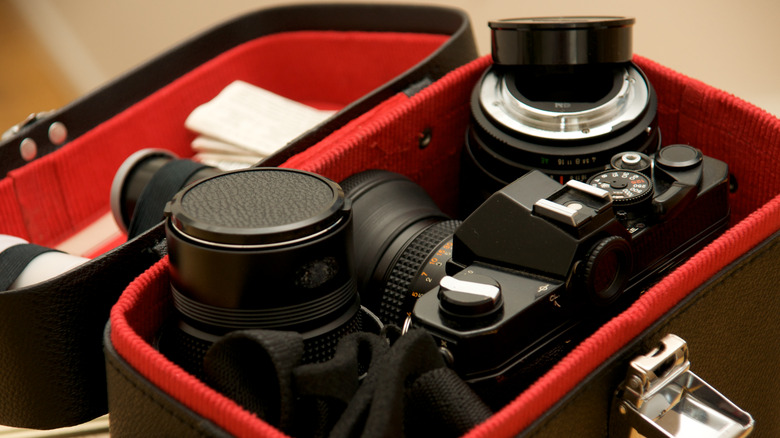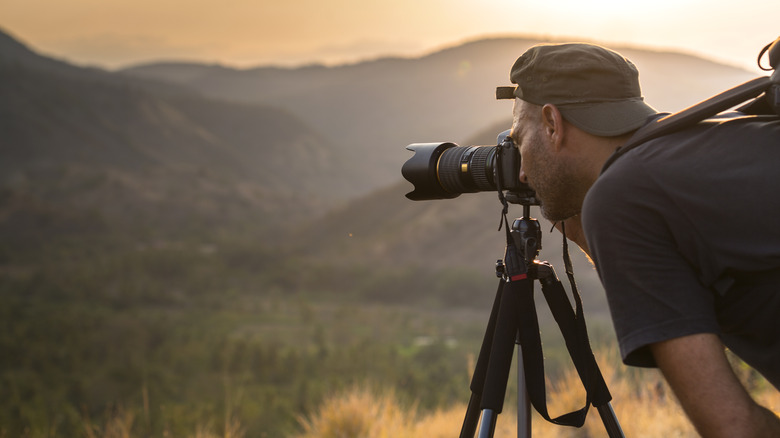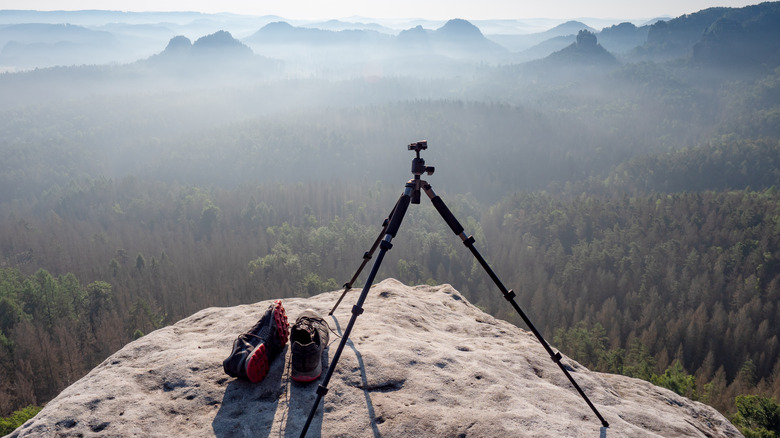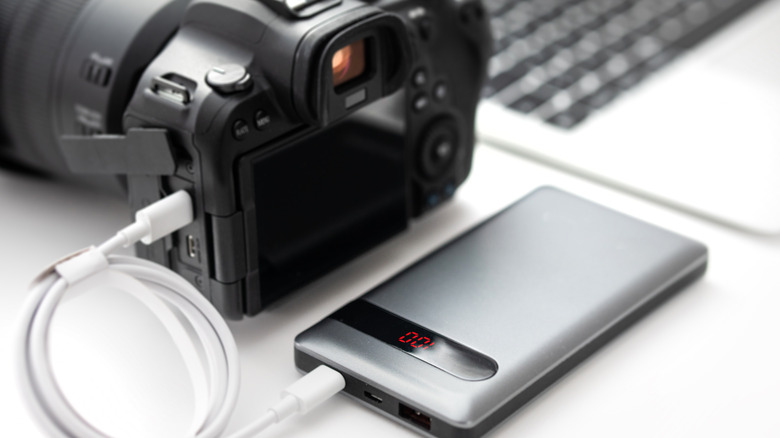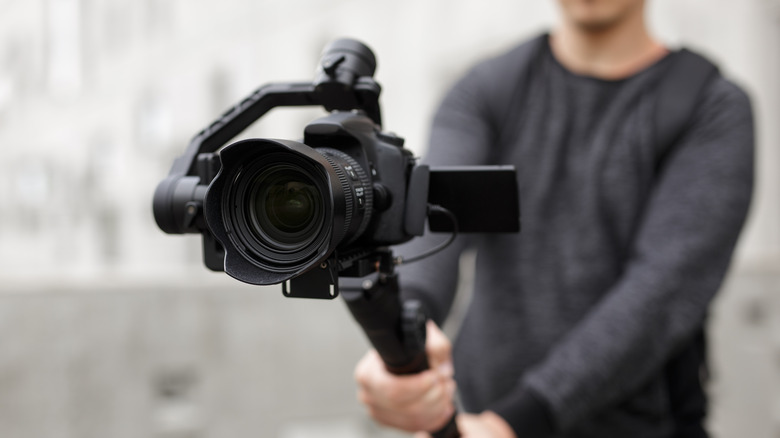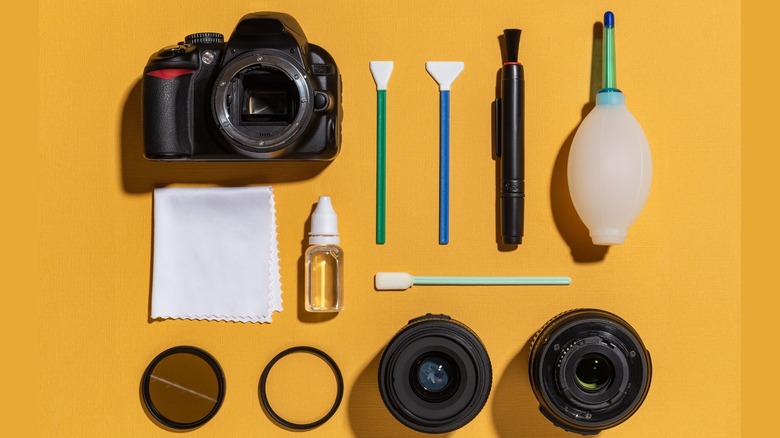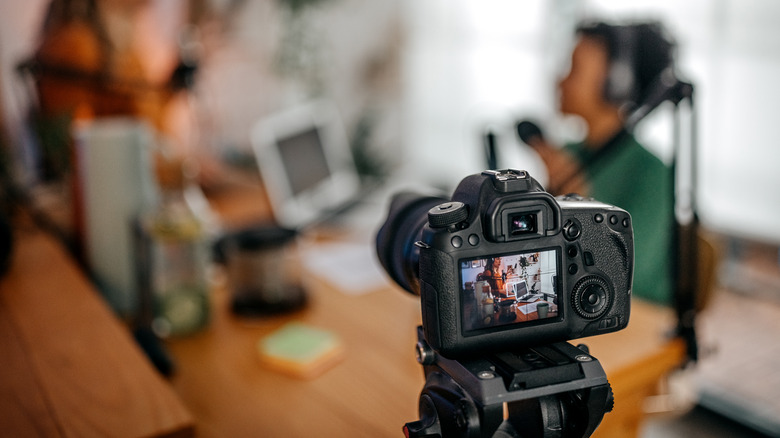7 Essential Camera Accessories Every Photographer Should Own
We may receive a commission on purchases made from links.
Photography is an immensely satisfying hobby and a thrilling profession. When starting off as a photographer, the only essential item is a camera. However, as a photographer refines their craft, additional equipment, gear, and accessories become essential to improve the quality of the photographs.
Once you decide you're serious about photography, there are a few key accessories that every serious hobbyist or professional needs to have. These accessories not only elevate the quality of the photographs but also protect the equipment. Photography is fun, but it's not free. A lot of high-end equipment can cost a lot of money, so after your initial investment, you'll want to ensure you get accessories and items that will last you a long time, keeping them safe and in working order.
We're taking a look at seven essential camera accessories that every photographer should own. Whether to protect your equipment or make your job easier, you should have these accessories as part of your regular photography toolkit.
Camera bag
When planning a shoot on location, it is crucial for photographers to have a secure method of transporting their equipment to the site. While large production companies may have access to secure cases like the Pelican brand, these are not the most portable. For most on-site photographers, a solid camera bag is essential. However, selecting one can be overwhelming due to the vast array of options available. There are several key factors to consider when choosing a suitable camera bag.
Comfort is crucial as photographers often carry their equipment on their shoulders for extended periods. The bag must be comfortable to wear and distribute weight evenly. Additionally, the bag must be spacious enough to accommodate all necessary equipment. Specialized bags designed for camera equipment are the most convenient options, as they feature secure, compartmentalized sections that keep items safe during travel. Although regular packs or backpacks can be used, camera equipment inserts are available to provide additional protection. Another important aspect to consider is water resistance. Since not all cameras are water-resistant, it is smart to select a waterproof bag to protect the equipment from unexpected downpours.
For a specialized camera bag, consider the Incase DSLR Pro Pack. It features quick-access compartments designed specifically for cameras and is compact enough to carry all the essentials. For a standard backpack, Duluth Packs are among the most durable on the market. These handmade backpacks are especially sturdy and come with a lifetime guarantee.
Tripods and monopods
To get the best shot, sometimes you need a little support. This is true for both posed and candid photos. Hours of continuous shooting can lead to shaky hands, which means you'll need to rely on post-production or stabilization settings. Alternatively, you can invest in a good tripod. Tripods vastly improve your photographs and are one of the essential accessories for any photographer, both amateur and professional. The most important features of a tripod are weight, durability, customization, and usage.
If you plan on traveling a lot with all your gear, you will want a compact and lightweight tripod. Hiking to a remote location for the perfect shot can be very rewarding, but hiking with a ton of extra weight on your back can be a slog. Tripods are available in various materials, including plastic, aluminum, and carbon fiber.
Durability is another important consideration. Although carbon fiber and plastic tripods are lighter, they are less durable than their metal counterparts. While it is important to handle equipment with care, accidents can occur in the field, and it is impractical to continually replace damaged gear.
Finally, consider your photography level and usage. If you just want a nice tripod for family vacations, there is no need to buy an expensive brand. Smaller, table-sized tripods or monopods will work well. However, these typically cannot be upgraded and have a non-removable camera head topper.
Tripod heads and quick connects
Now that you have found the perfect tripod, it is time to consider the topper that connects your camera to your tripod. While the lowest-end tripods typically do not have interchangeable heads, most others can be customized to suit your needs. There are several different types, but the most common are a ball head, a 3-way pan head, and a gimbal head. Most can also be equipped with quick connects to rapidly attach and remove your camera. Regardless of the head type, it is important to standardize your quick connects across all your equipment to ensure compatibility.
A ball tripod head is exactly what it sounds like. It uses a ball as a connector that can be moved in any direction. This gives a lot of flexibility so you can quickly set up shots by simply rotating the ball connector. The only downside is that it is not nearly as precise as some of the other heads.
The 3-way pan head allows photographers to control their camera along two different axes. This enables them to control exactly where their camera points. It is one of the most precise tripod head types and is perfect for precision work.
Finally, there is the gimbal head. These are stabilizers that keep your camera steady no matter how much the base actually moves. For example, if you are taking a photo on the deck of a ship or somewhere where the ground is shaky, the gimbal head will compensate for the movement and allow you to take smooth, stable photos.
Charging hubs
Battery failure during a shoot is a photographer's nightmare, making a reliable charging system crucial. While a surge protector can charge everything simultaneously, it is unwieldy and inefficient for on-the-go use. Photography equipment often requires specialized batteries, leading to the development of custom charging hubs for photographers. These hubs can be tailored to charge the diverse batteries needed for your equipment. When selecting a charging system, ensure it is compatible with all your gear, offers rapid charging, and is portable.
Before dashing off to purchase a charging hub, the first step is to assess your equipment to determine your needs. Investing in a premium system is pointless if it is incompatible with your gear. Next, consider the charging speed. Many universal chargers claim to charge any device, but may not specify the speed. A system with a quick charge option, or at least one that is not exceedingly slow, is key. You don't want to have to plan out charging sessions every other day.
Lastly, consider the size of the charging system. If it will remain stationary at home, size is less important. However, for photographers who travel frequently, a compact system that can be easily packed and does not occupy much space is ideal.
Gimbal (stabilizer)
We've already touched upon gimbal tripod heads, but to maximize their usefulness, you'll want a separate handheld gimbal stabilizer for capturing dynamic action shots. Gimbals operate using a gyroscope to counterbalance the camera weight and maintain lens stability, regardless of movement. The built-in gyroscope allows for smooth photos and tracking shots and is arguably one of the best camera accessories you can own. Although primarily used for video, photographers can also make use of these accessories. When purchasing a gimbal, consider several factors: size, price, durability, and versatility.
Size is a major consideration, not only the gimbal's dimensions but also your camera's size. Numerous gimbals are explicitly designed for camera phones and are incompatible with larger DSLR cameras. Make sure to verify the compatibility of your camera and gimbal sizes and connections.
When looking at connections, you may find that your gimbal can pull double-duty as a tripod head. While convenient, compatibility varies, so if you intend to use it as a tripod head, ensure your camera and tripod have the appropriate connections.
Lastly, gimbals are typically pricier than other accessories. For those on a budget, consider the materials and durability. A misaligned or damaged gyroscope renders the gimbal essentially useless.
Lens blower (cleaning supplies)
Maintaining and cleaning equipment is an important habit for most hobbies and professions, particularly in photography. Changing lenses and working outdoors exposes your camera to possible dirt or debris infiltration, which can degrade your equipment and waste all the money you spend on it.
Cleaning your camera lenses with a simple lens blower can significantly prolong your camera's lifespan. Hand pumps, for instance, enable you to direct air into your camera's tiny crevices to remove dust, which is a particularly handy tool during lens changes. The Rocket Blaster, a popular hand pump priced under $20, is a cost-effective option that every photographer should possess.
For those seeking to upgrade their cleaning supplies, electronic accessories are available. Brands like Nitecore offer electronic air blowers such as the BB2, which emits filtered, high-pressure air, outperforming hand pumps in efficiency and effectiveness. Rather than manually pumping air from a small balloon, a single button press releases a burst of air, removing dust and particles instantly.
However, this convenience comes at a cost. While electronic blowers are exceptionally effective, they are specialized accessories with higher price tags. It's important to save your equipment with cleaning supplies, but it can be done with a hand pump with a bit more effort and diligence. Ultimately, the decision to upgrade to an electronic blower or retain a hand pump depends on your budget and cost-benefit analysis.
Camera clip
Undoubtedly, one of the most vital camera accessories is the camera clip, or preferably, multiple clips. Camera clips utilize the same quick-connect mechanisms used to affix your camera to tripod bases but with the added advantage of universal attachment. This feature greatly simplifies travel and field movement, especially for photographers who use multiple cameras.
Camera clips can be installed virtually anywhere. Options include attaching your camera to a backpack shoulder strap, ensuring its safety and accessibility while freeing your hands. This method is vastly superior to neck straps, as it prevents the camera from swinging and colliding with objects. Additionally, belt attachment options offer similar benefits. For those who prefer neck straps or lanyards, specialized connectors are available.
By standardizing all of your camera connections and customizing where your camera can connect, you can easily free up your hands in the field. This can save your camera when trying to take pictures on the move and even save your back by holding your equipment in comfortable positions while on site. One of the most adaptable options is the Peak Design Capture system, which allows you to clip your camera to almost any strap or surface.

